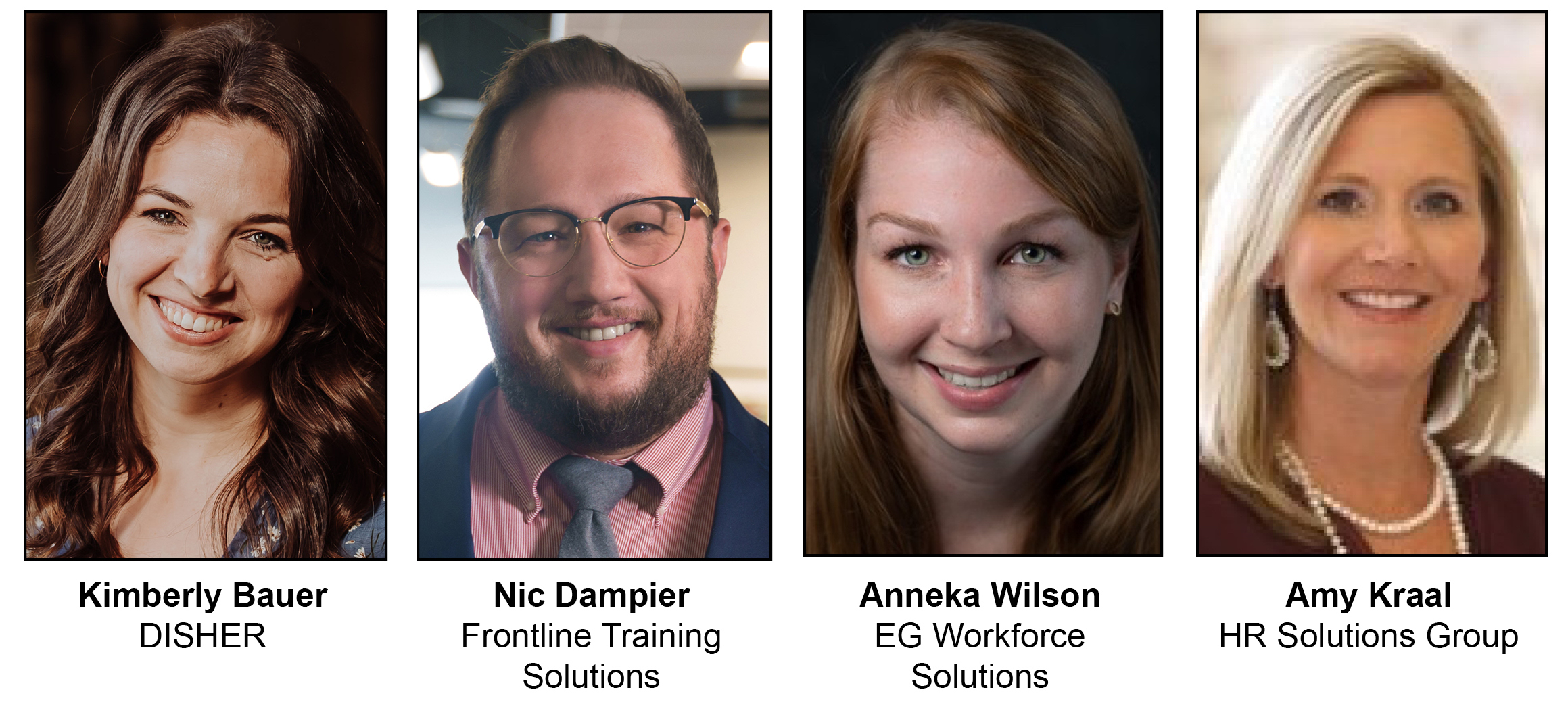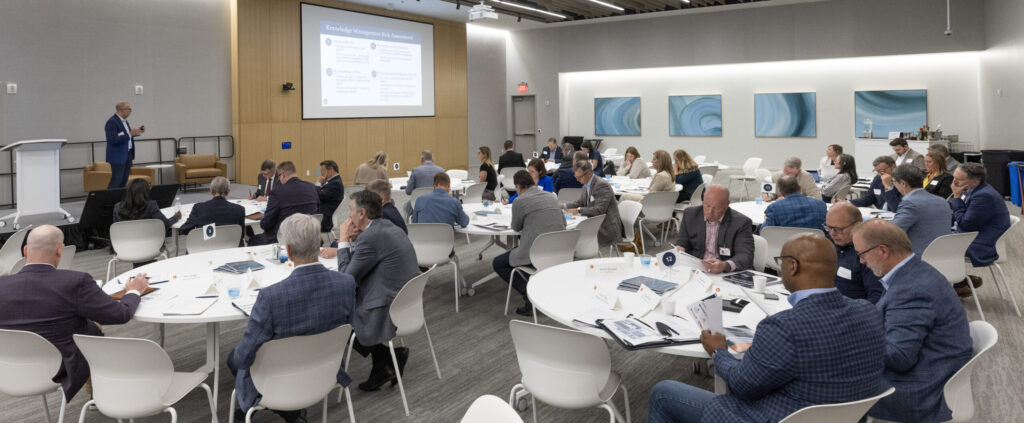Your brand as an employer is not just what you say it is. It’s how candidates — and current employees — actually experience your employee value proposition.
As Kimberly Bauer, talent solutions marketing specialist for DISHER Talent Solutions, puts it: “They are giving you their time, talent and knowledge — what are you giving them in return?”
Bauer posed that question as a presenter at our Oct. 11 Talent Solutions Series session on how to Strengthen Your Employer Brand. It’s a critical topic, considering that 69% of candidates say they would reject an offer from a company with a bad employer brand — even if they were unemployed.
The four-part, workshop-style session explored how to:
- Audit your employer brand by looking at your presence from the perspective of candidates.
- Use storytelling to help candidates see themselves finding purpose, making an impact and feeling a sense of belonging at your organization.
- Understand who you are trying to attract, recognize what they want, and determine the best way to engage with them.
- Determine your organization’s unique DNA, what sets you apart — and make sure that is reflected not just externally but also internally across the employment life cycle.
Each section was followed by a hands-on workshop that allowed attendees to explore the insights of the presenters.

Audit Your Employer Brand
Bauer said employers need to understand the unique qualities that make them stand out in the marketplace. And they need to communicate that to the right people.
This begins by reviewing your organization from the candidate’s perspective through four key channels: your website, job postings, social media and public forums such as Glassdoor:
- Be sure your website is easy to navigate with a clear statement of mission, values and first-hand accounts from employees
- Job postings should be engaging, easy to navigate and lead to a simple application process. Bauer recommended employers click through their own application process to see how well it functions.
- Social media should accurately reflect company values and culture, with engaging images and video of daily life at the company — but think first of what audience you want to reach before expending energy on social content.
- Third-party reviews can’t be controlled, but your presence and responsiveness reflect well on your brand.
Share Your Employee Value Proposition Through Storytelling
Nic Dampier, director of marketing for Frontline Training Solutions, said the employer brand comes down to the stories you tell about your employer value proposition (EVP). Effective storytelling strikes a chord and builds community.
“Whenever we share stories, we are extending and invitation for others to connect with our ideas,” he said.
“The best storytellers for your organization are your current employees,” Dampier said.
He offered tips for collecting written and video testimonials — video is especially effective, he said — by making it easy for them, offering incentives, and asking them some key questions:
- How has working at this company impacted you personally?
- How have you fulfilled your personal purpose working here?
- Do you feel you belong here? Why?
- What is something you would say to an interested candidate about working here?
Attract Candidates Aligned to Your Brand
Anneka Wilson, talent strategy lead at EG Workforce Solutions, began this section by highlighting changing dynamics of the workforce.
“New generations of employees are bringing a declining sense of loyalty to the employer,” Wilson said. Millennials, born between 1981 and 1996, who now make up 40% of the workforce have an average tenure with an employer of 2.75 years — one-third that of Baby Boomers. Gen Z workers, those born after 1996, have an even-shorter tenure, 2.25 years.
“To attract and retain the right employees requires understanding shifting priorities,” Wilson said.
While workers still care about compensation, they are placing greater emphasis on:
- Flexibility and work-life balance
- Belonging and inclusivity
- Opportunities for career development
Wilson recommended developing candidate personas — semi-fictional representations of the ideal job candidate to put yourselves in their shoes and understand what they are looking for.
“You need to think about who your ideal candidates are so you can tailor your messaging,” Wilson said.
Integrate Your Brand Throughout the Employee Lifecycle
Amy Kraal, HR executive and owner of HR Solutions Group, emphasized the importance of applying the employee value proposition beyond job candidates. Once you determine your company’s DNA, that should be reflected through all aspects of the organization, including the employee experience, she said.
“I firmly believe you can’t be someone else to your customers than you are internally,” Kraal said.
Kraal recommended developing an employer brand by looking for ways to describe company culture and how that is reflected in behaviors, approaches, processes, and policies — and then putting those into practice across the employee life cycle.
She invited participants to brainstorm opportunities through multiple stages of employment, starting from the interview and continuing to onboarding, benefits, performance management, promotions, recognitions, communications, training, leadership and exit interviews.
“I encourage all of you to have that EVP printed out. … Take that as your lens and ask if we are living out what we are saying we do,” Kraal said.
Next Up
The Talent Solutions Series resumes November 8 with a session exploring how to Enhance Onboarding & Career Pathways. Join us 9-11 a.m. at The Pinnacle Center in Hudsonville for a workshop-style event focused on developing a framework for onboarding and development that can be customized to each employee.
{{cta(‘713ce87e-df03-49f0-bb75-c850861b15d7′,’justifycenter’)}}


